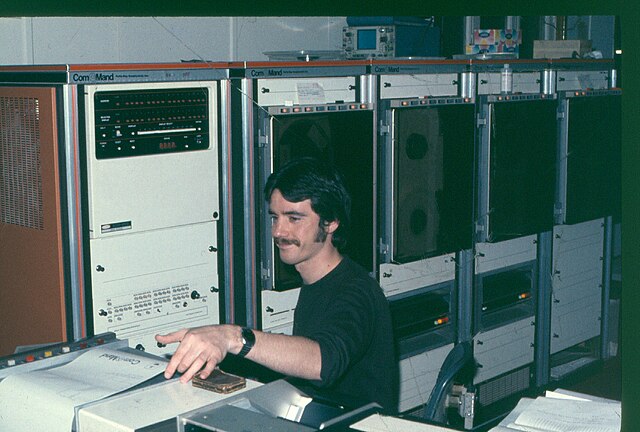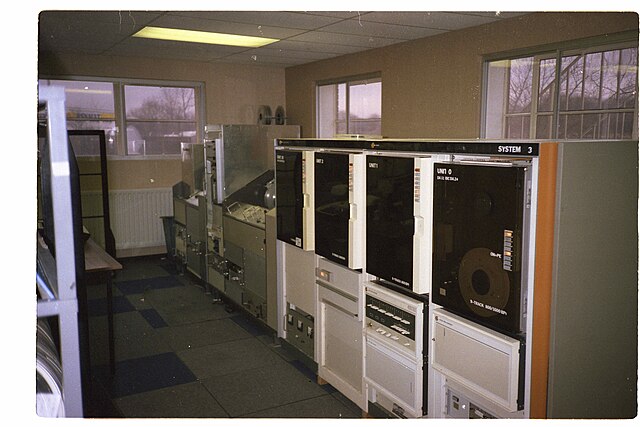The PDP-8 is a family of 12-bit minicomputers that was produced by Digital Equipment Corporation (DEC). It was the first commercially successful minicomputer, with over 50,000 units being sold over the model's lifetime. Its basic design follows the pioneering LINC but has a smaller instruction set, which is an expanded version of the PDP-5 instruction set. Similar machines from DEC are the PDP-12 which is a modernized version of the PDP-8 and LINC concepts, and the PDP-14 industrial controller system.
A PDP-8 on display at The National Museum of Computing in Bletchley, England. This example is from the first generation of PDP-8s, built with discrete transistors and later known as the Straight 8.
An open PDP-8/E with its logic modules behind the front panel and one dual TU56 DECtape drive at the top
A "Straight-8" running at the Stuttgart Computer Museum
PDP-8/e at the Living Computers Museum.
A minicomputer, or colloquially mini, is a type of smaller general-purpose computer developed in the mid-1960s and sold at a much lower price than mainframe and mid-size computers from IBM and its direct competitors. In a 1970 survey, The New York Times suggested a consensus definition of a minicomputer as a machine costing less than US$25,000, with an input-output device such as a teleprinter and at least four thousand words of memory, that is capable of running programs in a higher level language, such as Fortran or BASIC.
Six different minicomputers (out of many more models) produced by the Digital Equipment Corporation (DEC) with the year of introduction in brackets: First row: PDP-1 (1959), PDP-7 (1964), PDP-8 (1965); second row: PDP-8/E (1970), PDP-11/70 (1975), PDP-15 (1970).
Data General Nova, serial number 1, on display at the Computer History Museum
Raytheon RDS 500 seismic processing system in Benghazi in 1978
Varian Data Machines system connected to analogue tape playback system in 1984








